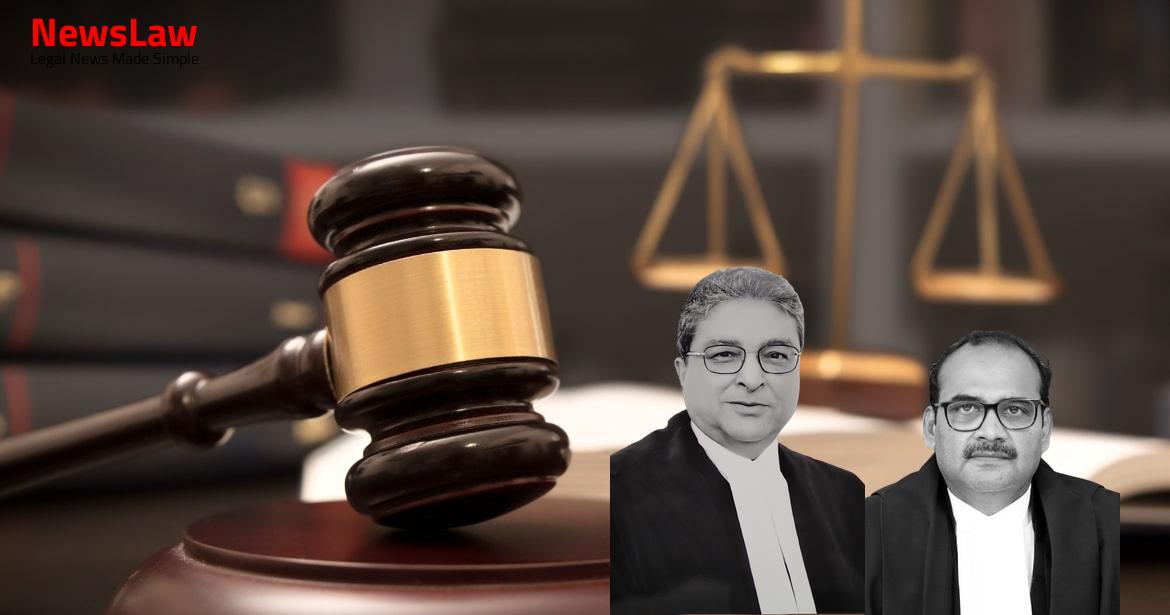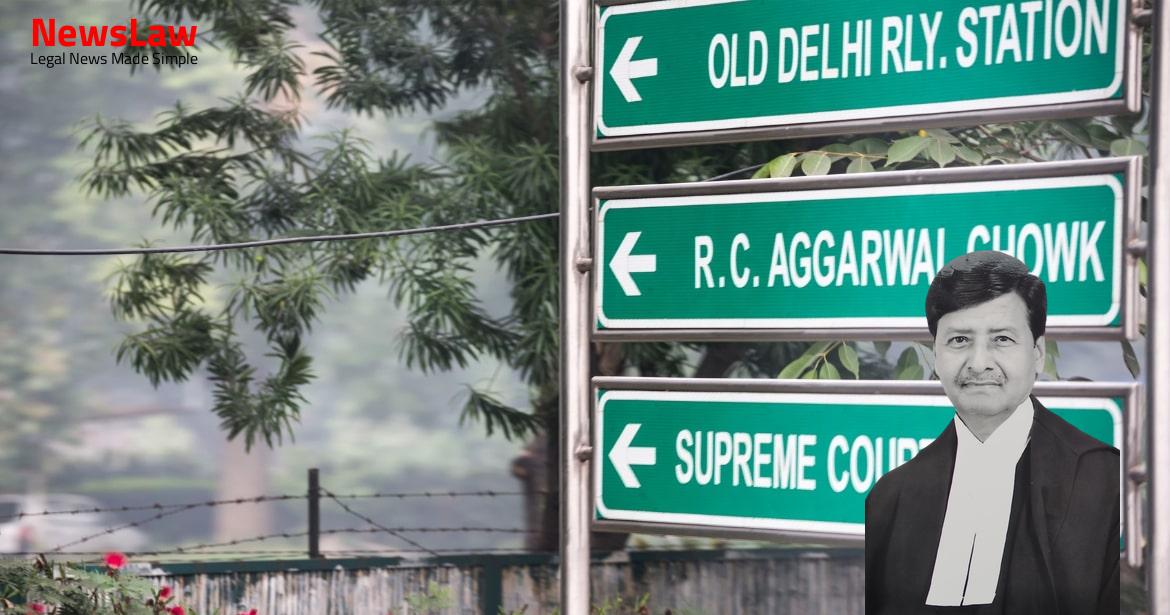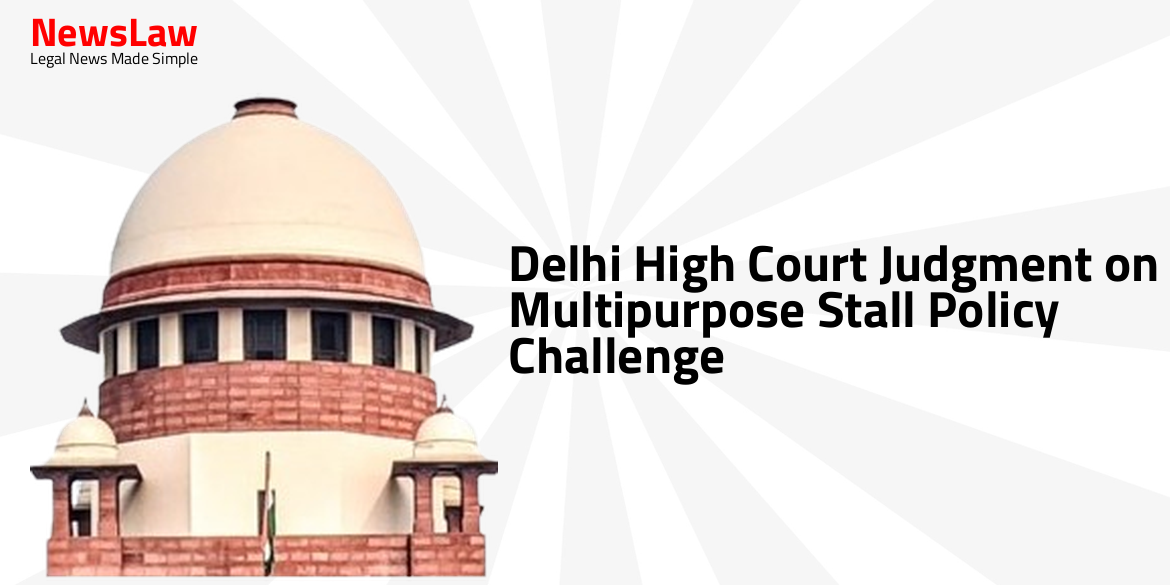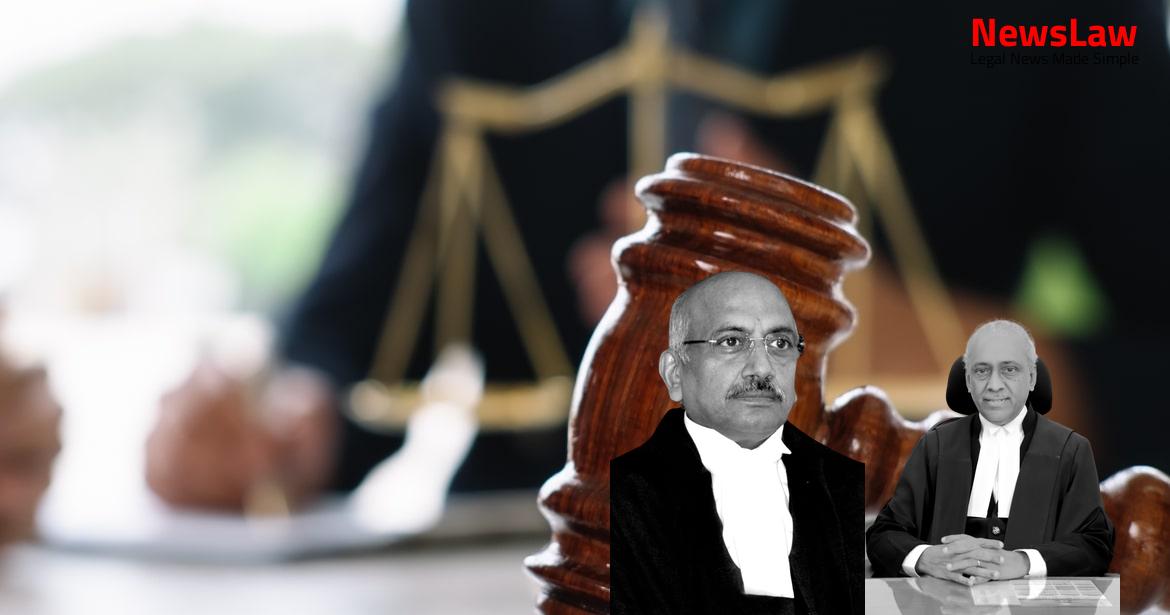Explore a detailed legal analysis of a recent court case involving a dispute over land compensation. The court’s thorough examination of key aspects such as development charges deduction and fair market value provides valuable insights into the intricacies of land acquisition law. Stay tuned to understand the nuances of this important judgment.
Facts
- The appellant, along with two others, purchased the scheduled property land in Khasra No 422 and Khasra No 427 in village Chhalera Bangar for a total sale consideration of Rs. 1,00,00,000/-
- A portion of the purchased land in Khasra No. 427 and Khasra No. 422 was acquired by the State through prior land acquisition proceedings in 1979-1980
- The appellant and NOIDA filed separate appeals against the impugned order
- The direction for determination of compensation as per the judgment in the case of ‘Bhopendra Singh and Others Vs. Awas Evam Vikas Parishad and Others, 2005’ was prayed
- The High Court refused to interfere in the award of compensation dated 31.01.2011 passed by Additional District Magistrate for acquired land of the appellant.
- The appellant sought compensation based on the circle rate of Rs. 1,10,000/- per square meter as directed by the High Court, but it was rejected.
- Contempt petitions were filed for alleged non-compliance of the High Court’s order, but were later withdrawn granting liberty to avail appropriate remedy.
- The appellant approached the High Court again in Writ Petition No 2272 of 2019, seeking title declaration which was granted in favor of the appellant.
- NOIDA’s appeal before the District Judge was dismissed reaffirming the appellant’s ownership of the land in question.
- The High Court directed the respondents to determine compensation at the market value of Rs.55,000/- per square meter and interference in the previous award dated 31.01.2011.
- The provisions of the 2013 Act relating to determination of compensation would apply in cases where the award has not been made under Section 11 of the 1894 Act.
- The Trial Court partly decreed the suit in favor of the appellant and restrained NOIDA from taking possession of land not subject to prior acquisition.
Also Read: Legal Analysis: Exoneration in PMLA Case
Issue
- Dealing with the issue of whether the writ petition filed by the sole petitioner is maintainable.
- The issue involves the claim for compensation of land measuring 2.18.00 bighas of Khasra Nos. 422 and 427.
- The court will determine the maintainability of the petition in relation to this land claim.
Also Read: Judicial Scrutiny of Bidding Process and Contractual Obligations
Arguments
- The arguments presented by the petitioner are deemed contrary to the record, not aligning with the truth, and cannot be accepted.
- The jurisdiction under Section 18 of the 1894 Act was overlooked by the High Court when determining compensation.
- Development charges of 75% should be deducted instead of 50% from the compensation.
- No deduction for development charges should have been levied as the plot was already developed before acquisition.
- NOIDA unlawfully sold the scheduled property before acquisition, violating the right to property under Article 300A of the Constitution.
- Respondent no. 7 has nothing to add to the dispute between NOIDA and the appellant
- Allotment of land was subject to litigation in the past case of Anil Kumar Srivastava, upheld by the court
- Any compensation, if enhanced, should be directed against NOIDA
- The legality of the judgment dated 10.12.2009 has been upheld by the court in the past
- The impugned scheme had wide publicity for developing congested areas like Sector 18
- The offer of a plot for decongestion purposes with restricted FAR and ground cover was justified by respondent no. 2
- Mr. L. Nageswara Rao raised concerns over the reserve price set by respondent no. 2
- The reserve price was considered low and understated for the plot’s size
- The State’s Additional Advocate General mentioned the land was bought as benami property with implications on the appellant’s entitlement
Analysis
- The High Court’s decision on the deduction of development charges was not evaluated from the perspective of all relevant factors.
- The judgment emphasized that each case should be considered on its own merits when determining the quantum of deduction for development charges.
- The land in question was deemed suitable for construction without the need for leveling or reclamation.
- It was observed that the development charge deduction should have been assessed considering the factors such as the nature of the land, area to be acquired, and commercial potential.
- The High Court’s deduction of 50% in development charges was set aside, as it did not adequately consider the contextual factors.
- The compensation at the circle rate of Rs. 1,10,000/- per sq. meter was deemed payable to the appellant as per the decision.
- Interest payment provisions under Section 34 of the Land Acquisition Act were invoked for the amount awarded not paid on time.
- The binding nature of judgments pronounced by courts of competent jurisdiction was highlighted, emphasizing the rule of law.
- Finality to binding judicial decisions emphasized in various cases.
- Doctrine of finality as essential part of the rule of law for administration of justice.
- Principle of deduction in land value crucial for determining compensation.
- Public purpose and compensation rights highlighted in cases involving deprivation of property.
- Necessity to justify deprivation of property under Article 300-A of the Constitution.
- Interest, whether statutory or otherwise, explained as representing profit or loss for creditor.
- Factors to consider for determining compensation cut towards developmental charges.
- Importance of public purpose and compensation rights under Article 300-A reiterated in different cases.
- High Court’s error in applying deduction principle and reducing fair market value of land critiqued.
- Land acquired should be developed and fit for use without further expenditure to avoid deduction in compensation.
- Compensation must be paid or deposited within one year from the date possession is taken.
- If compensation is not paid within one year, interest at a rate of fifteen per cent per annum is payable.
- Interest will be calculated from the date of expiry of the one-year period on the unpaid compensation amount.
Decision
- Amount deposited in 2017 earns interest at the same rate as directed before realization
- Compensation liability is on NOIDA due to land acquisition in public auction
- Statutory interest and 3% penal interest to be paid, with payment preferred within a month
- Compensation payable with statutory interest and 3% penal interest; 50% deduction towards development charge set aside
- No deduction towards development charge in compensation calculation as per circle rate
- 30% solatium as per Section 23(2) of 1894 Act is payable
- Civil Appeal No. 3637 of 2022 by NOIDA is dismissed; Civil Appeal No. 3636 of 2022 by Reddy Veerana allowed partially with specific directions
- Amount of compensation to be computed using Sector-18 circle rate of Rs. 1,10,000 per square meter
- 15% p.a. to be paid as per Section 34 of 1894 Act
- Statutory interest of 9% from the possession date to be paid for one year
- Entire amount to be paid within six weeks from the date of the judgment
Case Title: REDDY VEERANNA Vs. STATE OF UTTAR PRADESH (2022 INSC 520)
Case Number: C.A. No.-003636-003636 / 2022



